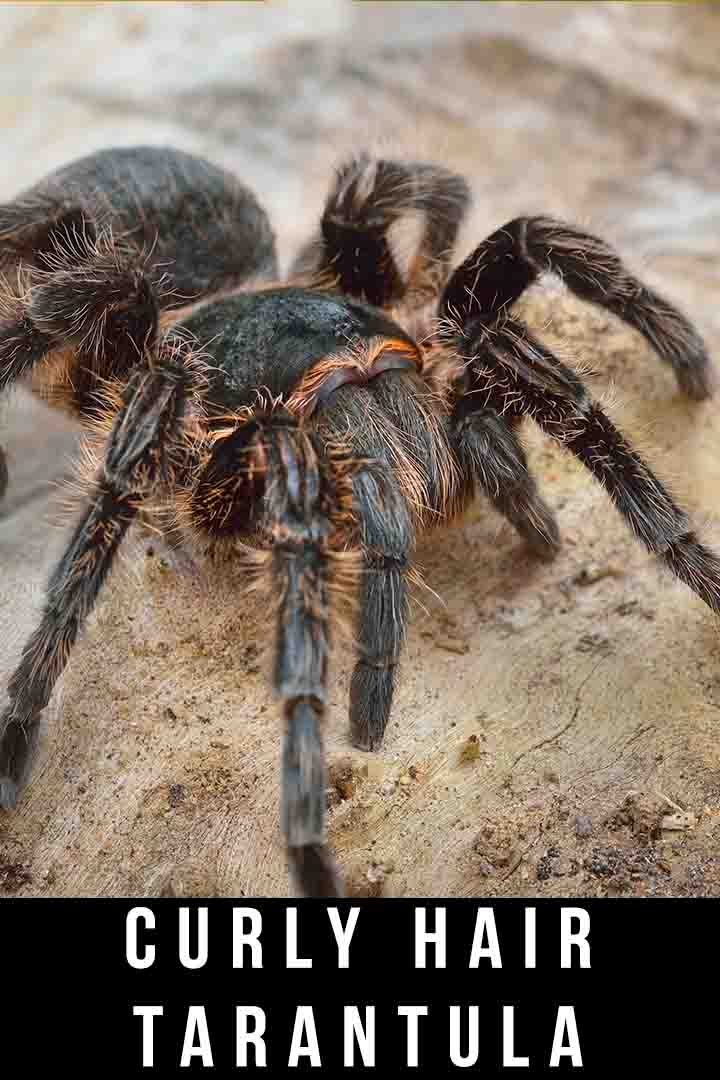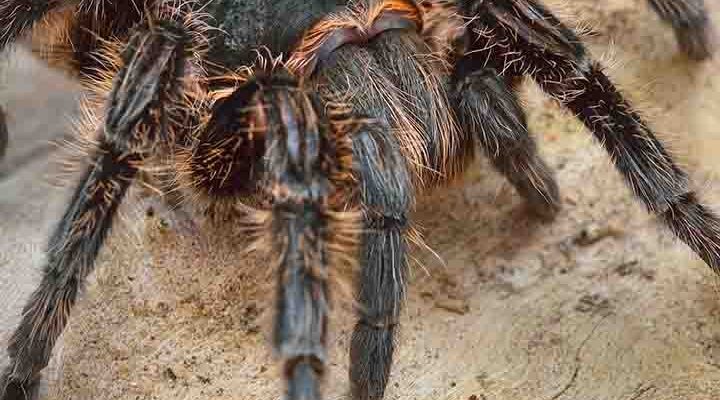
The Curly Hair Tarantula, known scientifically as *Brachypelma albopilosum*, hails from the lush forests of Central America. They’re popular in the pet trade not just for their striking appearance, but for their generally calm demeanor. Still, there’s a lot more to explore about their behavior and whether they pose any real threat, either to humans or to their fellow critters.
Understanding the Curly Hair Tarantula
First things first, let’s get to know what makes the Curly Hair Tarantula unique. These spiders have a soft, curly set of hairs that can make them look a bit like a miniature fluffball. They can vary in color from dark brown to a slightly more golden hue, but those curly hairs are what really set them apart.
Curly Hair Tarantulas typically grow to be about 4 to 5 inches across, making them a manageable size for both seasoned spider enthusiasts and newcomers alike. Besides their fluffy appearance, they also have a reputation for being relatively easygoing. While they are indeed tarantulas, and you might think that makes them scary, they are among the more docile species.
You might be asking, “So, why do they have that fluffy hair?” Well, those hairs serve a variety of purposes. They help the tarantula detect vibrations in the environment and can even be a form of defense, as they can kick off these hairs when threatened. It’s their way of saying, “Back off!”
Are Curly Hair Tarantulas Dangerous to Humans?
Let’s tackle the big question: Are Curly Hair Tarantulas dangerous? The short answer is no, they’re not considered dangerous to humans. Unlike some other species that might deliver a painful bite, the Curly Hair Tarantula is known for having a mild temperament.
When they do bite, which is rare, it’s usually more of a scare tactic than a sign of aggression. Their venom isn’t potent enough to cause serious harm to humans. Sure, you might get a minor sting that feels more like a bee bite, but that’s about as bad as it gets.
Here’s the thing: like any creature, if they feel threatened, they might bite. But their first line of defense is to retreat. So, if you’re handling one or observing one in the wild, just respect their space and you’ll likely avoid any mishaps. Remember, they’re not out to get you; they just want to be left in peace.
Curly Hair Tarantula Behavior
Now, let’s look at the behavior of the Curly Hair Tarantula. You might picture a spider darting around aggressively, but that’s not quite the case here. These tarantulas are more like introverts of the spider world. They prefer to hang out in their burrows and will only come out when the mood strikes them—usually around dusk.
You might find them significantly less skittish compared to other species. When threatened, they often play dead or try to retreat instead of lunging at you. This calm demeanor makes them a great option for first-time spider owners.
While handling a Curly Hair Tarantula, you should still be mindful. They could still kick their urticating hairs as a defense mechanism. These tiny hairs can irritate skin, causing itchiness or mild discomfort. If you’re careful and gentle, you’ll have a fun and fascinating experience interacting with them.
Comparison with Other Tarantula Species
It might be helpful to compare the Curly Hair Tarantula with some other species to give you a better perspective on their behavior and temperament. For instance, the Mexican Redknee Tarantula is another popular choice among spider enthusiasts.
While both species are generally calm, the Mexican Redknee can be more skittish and prone to defensive behaviors. On the other hand, the Curly Hair Tarantula tends to stay calm and collected, making it more suitable for those who are newer to spider keeping.
You may also hear about the Goliath Bird-Eating Tarantula. While it sounds fierce, it’s generally not aggressive towards humans unless provoked. However, its size and the intimidating name can make it a less appealing option for some. In contrast, the Curly Hair Tarantula’s fluffiness and gentle nature make it an excellent choice for pet owners of all experience levels.
Curly Hair Tarantula Care Tips
If you’re considering bringing a Curly Hair Tarantula into your home, it’s important to know how to care for them properly. Honestly, they’re quite easy to maintain if you keep a few things in mind.
Start with their habitat. A simple terrarium with adequate ventilation will do the trick. They need a substrate to burrow in, so something like coconut fiber works well. Keep the tank clean, and make sure to provide fresh water regularly.
Temperature and humidity are also crucial to their well-being. Aim for a temperature between 75°F to 85°F, and maintain humidity levels around 60% to 70%. Monitoring these factors will keep your Curly Hair Tarantula happy and healthy.
Lastly, feeding is essential. These spiders typically eat crickets, mealworms, or roaches. You might find it enjoyable to watch them hunt! Just make sure you don’t overfeed them; a couple of meals a week is usually plenty.
Final Thoughts on Curly Hair Tarantulas
In conclusion, the Curly Hair Tarantula is not the monster that some people might expect. They’re more like gentle giants of the spider world—fluffy, calm, and with a bit of personality. While they can defend themselves, they’d much rather retreat than attack.
Whether you’re simply fascinated by these creatures or considering one for a pet, knowing about their behavior and care can help you appreciate them even more. They’re a unique addition to any pet lover’s collection and a great conversation starter—who wouldn’t want to show off their little furry friend?
So next time someone brings up tarantulas in conversation, you can set the record straight about the Curly Hair Tarantula. They’re not dangerous or aggressive—not unless you count being exceptionally cute and fluffy as aggression!

